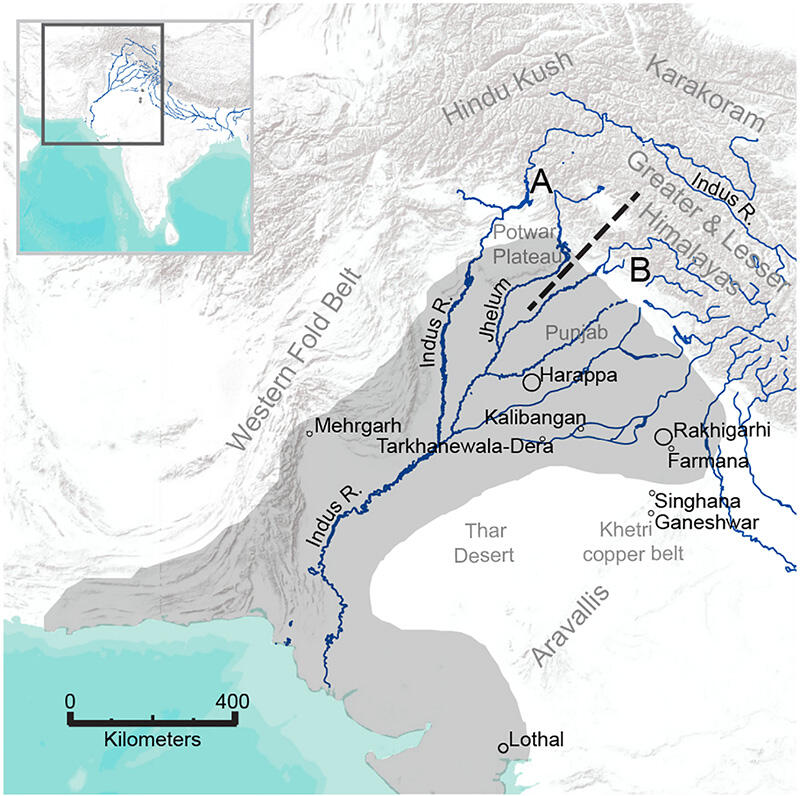Although cemeteries and burial analysis of Indus peoples is sparse, the authors write, "however, important insights have been gleaned from available mortuary populations. Previous morphological and strontium isotope studies of skeletal material at the sites of Harappa [12,13 original article footnotes] and Lothal [14] suggest residence change may have been common for certain individuals and that increased mobility facilitated gene flow with hinterland groups. At Harappa, males show greater isotopic and morphological variation—a pattern previously interpreted as evidence for matrilocality [13]. Likewise, morphological similarity between individuals from Lothal and nearby hunter-gatherers suggests some degree of urban-hinterland mobility [14]." In other words, evidence from burials can offer rich evidence for the movement of populations during Indus times, and this article attempts to look more closely at finds from Harappa and Farmana (near Rakigarhi) to see what they might say about migration and the relationships among Indus peoples.
"Despite the potential influx of immigrants, Harappa Phase burials are relatively homogenous in terms of material culture and contain artifacts known from domestic Indus contexts [7]. Most Indus cemetery burials consist of a rectangular or oval pit aligned north to south with modest numbers of associated ceramics at the head of the grave. Skeletal remains typically lie supine and extended and are sometimes adorned with small quantities of jewelry or other personal effects. Skeletons may be incomplete or absent with grave goods present in various quantities, but nearly all cemetery inhumations conform to a similar layout that is not readily differentiated into distinct social classes. The skeletal series from Harappa (Cemetery R-37) and Farmana are consistent with the above trends . . .."
The article then gives extensive background on how dental enamel can be used to assess where people grew up and how "local" they are to the place they are buried given different flora and fauna consumed. Teeth offer a unique chronicle of habitation because they permanently encode information, such as type and proportion of lead isotopes. Although the samples are limited to a few dozen exemplars, it does seem as if the men buried in both Harappa and Farmana came from more distant locations, so that "the persistence over hundreds of years of all-immigrant cemeteries in the Indus context may best be interpreted as evidence for a regularized institution of immigration culminating in a distinct mode of disposal at death." More work needs to be done, but "intra-individual isotopic analyses of human tooth enamel from Harappa Phase cemetery burials at Harappa and Farmana provide strong evidence that the mortuary populations were nearly entirely composed of first generation immigrants. This inference rests primarily on the use of multiple isotope systems and standard statistical methods for assessing the most plausible isotopic ranges of local dietary catchments at the study sites."
Indus societies seem to have supported complex flows of people, possibly from resource-rich areas, of people who had specific mortuary practices that were adhered to for at least the first generation. Even if there was a reigning ideology or elites, these were intricately connected to people with other critical beliefs and practices.
Image: Map of the Indus Civilization culture area with locations mentioned in the text.

